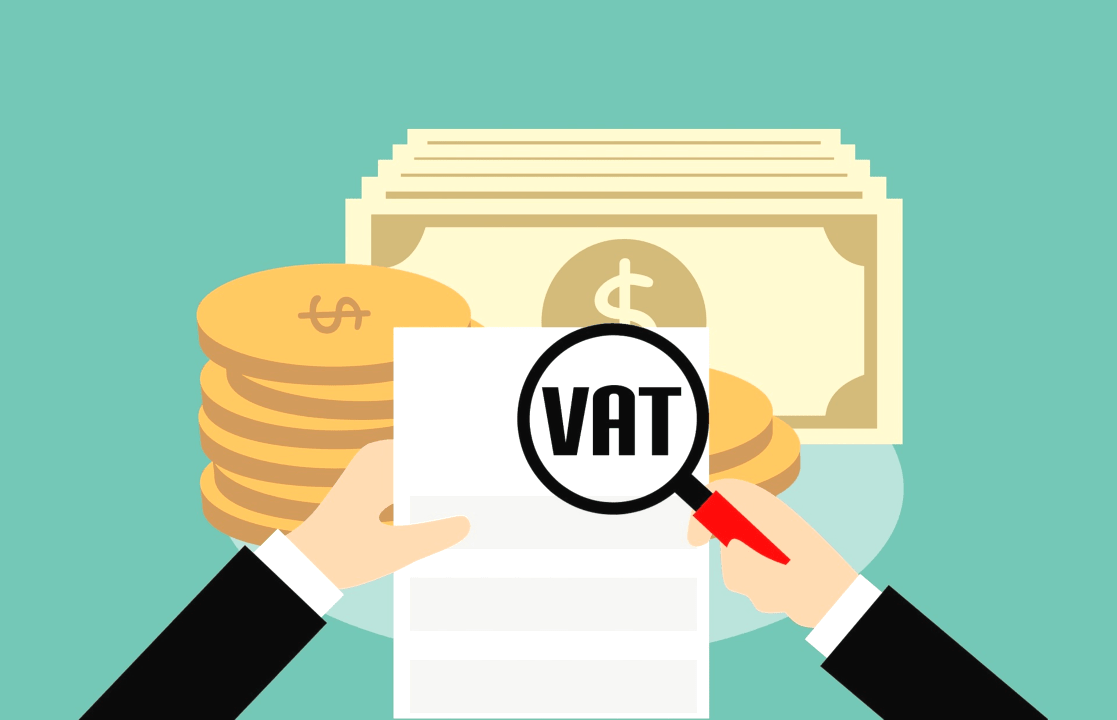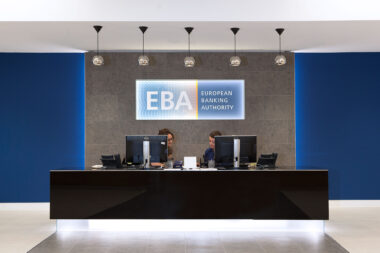The coronavirus crisis has led to a development of participatory financing platforms which have seen an exponential increase in their revenues. But with the development of these platforms, the risk of fraud has itself increased, with more and more platforms setting up fictitious projects, often offering investors high interest rates. How can you, as an investor, build up legal guarantees to protect yourself against these fraudulent platforms? The subject is very vast, and can be divided in a few different thematics. In this paper, we will explore the different problematics that an investor can encounter when someone invest and he can answer them from a legal standpoint.
How to protect yourself from platform fraud?
Many platforms are mainly located in countries where the regulation is very legimited, thanks to the flexible regulation on the subject. This has lead in the past to some problems. For instance, at the beginning of 2020, many Estonian crowdfunding platforms were no longer able to pay back their investors, initially the Estonian police became interested in the mismanagement of these platforms. The investigations led to the discovery of evidence of fraud.
To understand how this fraud was organised, it is worth recalling how a crowdfunding platform works. When you invest in a project through a crowdfunding platform, you should be aware of the risk inherent in this type of investment: if the project fails, the investment will collapse and be lost. However, there are ways to limit this risk. The investment platforms themselves insure themselves against this risk and this means that they are not accountable to investors for the success or failure of investments. They are only subject to a duty of care which takes the form of verification of the identity of borrowers and their ability to repay. Once this obligation is fulfilled, platforms do not have to guarantee the success of the investment made by the capital providers. Crowdfunding is therefore a platform that is totally conducive to scams: there is no justification for the failure of the investor to repay. In this situation, it is necessary to know how to recognise a fraudulent platform in order to be able to turn against it if you are a victim.
Wisefund is one such Estonian crowdfunding platform suspected of fraud. It aimed to finance extremely diverse projects ranging from the manufacture of microbiological fertilisers to the purchase of car parts for export. One irregularity drew the attention of investors: the guarantee allowing the platform to redeem bonds from investors in return for a discount was unilaterally deactivated. This constitutes a unilateral modification of the contract between the platform and the investors, and this possibility is regulated in the majority of EU member states’ laws, in this case Estonian law applies: how does it regulate the unilateral modification of the contract by a crowdfunding platform?
The capital providers discovered that this guarantee was provided by a Hong Kong company, Best Treasure Limited, located in a letterbox building. Despite these irregularities, the platform continued to operate, making numerous late payments and justifying its loss of capital by the risks associated with the investments. The investors decided to file for insolvency in the Estonian civil court (equivalent to a writ of reorganisation) on the basis of alleged fraud.
In a judgment of 14 January 2021, the Estonian civil court rejected the investors’ claim, considering that once fraud is suspected, only the criminal courts have jurisdiction. In this situation, a crowdfunding platform cannot be sued in insolvency, so the creditors must initiate criminal proceedings. This decision was confirmed by the Estonian Court of Appeal on 26 March 2021.
This is a decision that applies the classic division of competences between civil and criminal matters. The civil court denies jurisdiction in all situations where fraud is suspected. This implies that investors can only be reimbursed if they initiate proceedings before the criminal courts. As in French law, the courts have held that the civil court cannot substitute itself for the criminal court in judging criminal acts.
It is likely that this ruling, handed down by the Estonian courts, will set a precedent within the European Union. Investors do not have a claim on the platform but on the final borrower, so in case of fraud, they will have to turn to the criminal courts and not to the civil courts. The investors of the Wisefund platform had to pay additional sums to bring this action, which was ultimately unsuccessful. This case shows that it is necessary to determine which type of action to take to avoid incurring additional costs and lengthy proceedings.
It is possible to imagine certain hypotheses whereby investors would engage the civil liability of the participatory finance platform, in particular on the basis of its due diligence obligation, and they could then have been compensated on civil grounds. In this case with the Wisefund platform, the initiation of this procedure would have forced the platform to provide evidence of fraud or the absence of fraud. Similarly, it would be possible to hold the platform liable before the civil courts if, on reading the contract between it and the investors, it appears that certain clauses are abusive.
At present, criminal proceedings are underway and the Estonian police have contacted the local police of the investors. The investigations have led to the discovery of evidence that suggests a Ponzi scheme, a criminally punishable financial fraud. But how can you, as an investor, identify them?
A second case : the platforms Envestio and Kuetzal, which offered capital providers to invest in empty companies or in existing companies but did not seek investors on the platform in order to recover the money provided by the investors and not to reimburse them by invoking the failure of the project. At the end of 2019, investors on the crowdfunding platforms investigated the projects that Envestio and Kuetzal were offering to fund, revealing the fictitious nature of some of them. These revelations led investors to demand their money back, causing the collapse of the Kuetzal and Envestio platforms. This collapse is explained by the fact that any financial intermediary does not have enough funds to pay back all its investors at once. In June 2020, the bankruptcy of both companies was declared by the Estonian courts.
Faced with this situation, investors organised themselves to form a collective action against the 2 participatory finance platforms. A procedure has been implemented at European level to facilitate the application process for the platforms’ investors. Criminal investigations have been initiated and are still ongoing, but the Estonian police suspect the platforms of being fraudulent and organising money laundering activities.
Other platforms such as Monathera or Grupeer have also experienced difficulties in repaying their investors. Initially, this was considered to be caused by mismanagement and default by borrowers, however, it now appears that these companies are suspected of embezzlement.
Investors in the Grupee platform have come together to coordinate action against it and investigations appear to reveal a scam. The Latvian authorities, where the platform is based, have stated that Grupeer has no licence to provide financial services in Latvia. Although the platform was originally established in Latvia, it was legally transferred to Ireland and therefore falls under Irish national regulation and should have obtained a licence to operate in Latvia. The characterisation of the applicable law is fundamental here, as the rules that apply will differ between a Latvian platform and an Irish platform.
It seems that this crisis of the crowdfunding platforms has raised awareness. It has revealed the lack of supervision of equity crowdfunding platforms, for example, there is no supervisory authority for platforms in Estonia to ensure that their projects are genuine. It was noted that it is difficult to engage the civil liability of the platform, but if the bankruptcy of the platform is not due to fraudulent manoeuvres, only the civil courts can be used, and it will therefore be necessary to determine on what grounds to base oneself in order to be compensated. Similarly, no procedure was really provided for to enable collaboration between the national authorities concerned and foreign investors; this was born out of practice, in particular by drawing on existing procedures. There was no European framework for crowdfunding, leading to a disparity of rules within the Member States: but how to determine the law applicable to the platform?
To address these issues, the European Union has taken steps to create a harmonised regulation between EU countries, the regulation on this issue will be applicable from 10 November 2021. It provides a framework for crowdfunding, notably by imposing certain obligations on the investment platform, such as information obligations towards the investor. Being aware of the obligations incumbent on a crowdfunding platform is becoming a necessity, as breaches of these obligations have important legal effects.
Moreover, Estonia now wants to strengthen its legislation to regulate the activity of P2P platforms more strictly and to prevent such a situation from happening again. In addition to complying with European regulations, the Estonian legislator wishes to create a framework for P2P consumer loans, similar to the one applicable to companies. It is also intended to regulate crypto-currency services, which are currently very poorly regulated. The Estonian Ministry of Finance’s draft regulation provides that all service provision activities related to virtual currencies will be placed under the jurisdiction of the Financial Supervisory Authority, increasing the control over these institutions, which should help limit fraud.
To prevend fraud, check reliability.
But how can you be sure of the reliability of a crowdfunding platform? This is a question that is currently at the heart of the news with the discovery of numerous scams set up through participatory financing platforms.
TFGCrowd is one such crowdfunding platform suspected of fraud. A class action suit was filed by investors after the service became increasingly late in making payments. It seems that it is suspected of fraud. This raises the question: what are the elements, the clues that allow us to control the reliability of a participatory financing platform?
Initially, the TFG Crowd platform offered investment plans to its members, so it acts as an investment advisor. The idea is that investors send money to the platform, which will invest it in a diversified portfolio. This diversification of the portfolio reduces the risk of loss to the investor, but other schemes would have allowed investors to limit their risk.
The risk of investing in a project is that if it fails, you will lose the money invested in it, so you need to put safeguards in place to minimise the losses your investments may suffer.
One of these guarantees is the fact that investing in many different projects allows you to reduce losses if a project fails. However, the downside of this diversification is that it involves additional work: before investing in a project, it is essential to find out whether the project is reliable. The more projects you invest in, the more work you have to do to analyse the market and balance the gains and risks. The advantage of this type of financing platform is that it takes care of this work of analysis and of the investments while respecting the principle of due diligence, so as to balance the risks and the interests of the investments, but how can we be sure that the work provided by the platform is sufficient?
On paper, the TGF crowdfunding platform seems ideal: a minimum of work for investors, a high interest rate, guarantees put in place by the platform. However, before investing in any crowdfunding platform, it is advisable to analyse it thoroughly to ensure its reliability; and irregularities concerning the TFG Crowd platform have not been slow to emerge: what are these clues to detect fraudulent projects set up by a crowdfunding platform?
The first problem with this platform is the lack of transparency: investors have no idea how the money is invested and if it is really invested. TFG Crowd displays a multitude of projects on its website, but it is impossible to get in-depth information about them, for example, the location of the properties is not necessarily indicated, the guarantees provided are not specified, or even how investors will get their money back. This lack of transparency is reminiscent of the Envestio platform, which was investigated as a scam. However, information obligations are imposed on participatory finance services in the majority of EU Member States and the institutions have sought to standardise these obligations within the EU. Today, the absence of information for investors on the guarantees provided to them constitutes a violation of European law, which you can invoke as soon as the applicable law is that of a State that is part of the European Union. It is therefore appropriate to question the methods of application of European law within the Member States.
The second suspicious element is that the TFG Crowd funding platform provides investors with a fixed annual interest, independent of the returns on investments, which is extremely high. This interest can represent from 14 to 26% of the initial investment. The size of this income should have alerted investors: how can an investment yield so much with such low risks? This is not possible unless the platform is using reprehensible financial arrangements, which one must be aware of in order to recognise and protect oneself.
Secondly, the TFG platform claims to have a buy-back guarantee fund in the event of default by a project contributor. This sum would be used to guarantee the repayment of the face value of the loan and the accrued interest. However, when one examines the amount of this guarantee, it appears derisory in relation to the amount of projects financed. FT Crowd claims to have a special fund of €1,437,000 to be used in the event of a project failure, but the amount allocated to this fund is very small and a single failed project would be enough to wipe out this repurchase promise.
In addition to this buy-back guarantee, TFG Crowd is putting in place a corporate guarantee to secure the investments made through its platform. It guarantees the repayment of the loans issued with the movable and immovable assets it owns, which will be secured by their shares. During the period in which the loans received are active, TFG Crowd Limited undertakes not to pay dividends to its shareholders or reduce the value of these guarantees, for example by disposing of any of its property or assets. Similarly, the share capital, on which the value of this guarantee depends, must be analysed in detail. The value of this guarantee is zero because the share capital is only 1GBP, so that an action to enforce this guarantee would be of no interest to the investors. This situation illustrates that once you have an investment
Finally, the guarantees offered by the platform are illusory, and this situation shows that simply reading the contract between the platform and the investor is insufficient to know the level of protection granted to investors. As a provider of capital, it is necessary to inform you of the real issues surrounding this contract and to inform you of the reality of the guarantees it grants you. This effective information allows you, in the event of the platform’s failure, to take the most appropriate course of action to turn against the participatory financing platform.
Limit your losses
How can you protect yourself from certain unforeseen risks when investing in crowdfunding? The subject is vast and the problems multiple: one of the risks as an investor in a crowdfunding platform is that of the insolvency of the platform or the investment.
Insolvency of the platform means that the participatory financing platform, as a company, does not have sufficient cash flow to repay its debts. Since the platform is the intermediary in many cases, such as in crowdlending, this can have a significant impact on the distribution of the loan interest. On the other hand, the insolvency of the investment means that the project whose capital provider participated in the financing is no longer able to pay off its creditors, and the investment is lost. In these two cases, it is necessary to have legal guarantees in order to be able to take action against the platform in the event of damage: knowing how to protect oneself from losses in the event of insolvency becomes a necessity.
Yet solutions exist. In France, for example, any insolvency can be broken by legal action. In the event of even partial insolvency, the platform may be subject to collective proceedings, a judicial measure aimed at guaranteeing the continuation of the company’s activity and maintaining employment, while ensuring that the rights of creditors are respected.
Among the various procedures, the most widely used is that of judicial liquidation, which is opened when the debtor is in a situation of “cessation of payments and whose recovery is clearly impossible” (Article L640-1 of the Commercial Code).
Liquidation has a particularly important impact on the company because it means that the recovery of the company’s finances is impossible (Cour de Cassation, Chambre commerciale, 8 July 2003, 00-13.627), particularly when a company is in a situation of cessation of payments, meaning that it is “unable to meet its liabilities with its available assets“. In this situation, the company can no longer meet its debts and the procedure will organise the end of the debtor’s activity; it is therefore appropriate to ask: How, as an investor, can you obtain the repayment of your claim when the debtor is insolvent? As soon as the judicial liquidation is pronounced, a procedure aiming at paying off the creditors is put in place. However, this action plan will affect the creditors of the company in liquidation by limiting their power to act. The main goal is to be able to pay the creditors in the end, but liquidation is not always the best solution.
First of all, it implies the freezing of the debtor’s liabilities, i.e. the debtor is prohibited from paying creditors whose claims arose before the opening of the judgment. Similarly, as a creditor of the platform, the investor will have to declare his claim in order to hope to be paid. This means that any creditor can no longer sue his debtor individually.
During the course of these collective proceedings, a creditors’ representative is always appointed who has a monopoly on action: the liquidator; he acts on behalf of and in the interest of the creditors (Article L641-4 of the Commercial Code). The liquidator will receive the damages that will be distributed among the creditors. In principle, the distribution is carried out by respecting the order of privileges: unsecured creditors will only be paid once the privileged creditors have been paid. It is therefore necessary to ask how a creditor can provide guarantees in order to benefit from the status of preferred creditor. During the judicial liquidation procedure, creditors remain subject to their contractual obligations. Indeed, as a matter of principle, “The co-contractor must fulfil his obligations despite the debtor’s failure to perform commitments made prior to the opening judgment. Failure to perform these commitments only entitles creditors to a declaration of liabilities” (Article L641-11-1of the Commercial Code). This means that you remain subject to your obligations under the contract in the same way as if the liquidation proceedings had not been initiated, e.g. the investor must pay all the funds that he had undertaken to deliver to the platform; however, certain assumptions are allowed for the automatic termination of the contract. However, the Court of Cassation has accepted that a situation in which the contracting party expressly declares its intention not to terminate the contract and the liquidator does not oppose this has legal effects. (Court of Cassation,Civil, Commercial Chamber, 17 February 2015, 13-17.076).
In principle, “the judgment closing the judicial liquidation for lack of assets does not allow creditors to exercise their individual actions against the debtor” (Article L643-11 of the Commercial Code). However, there are exceptions to this rule and it is therefore necessary to consider how the individual action can be exercised and in what situations. This is notably the case when “the claim originates from an offence for which the debtor’s guilt has been established or when it concerns rights attached to the creditor’s person“; but the criminal chamber of the Court of Cassation specified in a decision of6 April 2016 that when the claim originates from an offence for which the debtor’s guilt has been established, the recovery of the individual action can only take place after the closure of the compulsory liquidation procedure.
When it comes to crowdfunding, platforms that go bankrupt are a common occurrence. In France in 2018, the Unilend platform was declared insolvent, meaning that it no longer had the capacity to settle its debts. This situation can happen to any professional and to any participatory finance platform, so it is necessary to take measures to limit the consequences of this.
However, no collective action has been taken and the company has undertaken to reimburse each of the investors. It can be seen that judicial proceedings are not systematic and that it may be worthwhile to consider an out-of-court procedure when the judicial procedure does not correspond to the interests of the investors. Out-of-court proceedings are a mechanism for parties to a dispute to assert their rights without going to court: knowing the interests at stake, such as financial means or the need for confidentiality, is therefore necessary to determine whether an out-of-court settlement of the dispute would be more appropriate.
In recent years, class actions against crowdfunding platforms have increased, especially at European level. In January 2020, two crowdfunding platforms, EnvestioandKuetzal, were subject to compulsory liquidation proceedings. At present, the trial is still ongoing but investigations have revealed that they were fraudulent platforms. The Kuetzal collapse is said to have affected more than 550 people and to represent €3 million in liabilities. Envestio is said to have affected more than 1,800 people who are claiming €10 million from the company.
A collective action has been implemented. The companies are established in Estonia, so they are subject to Estonian law. In addition to being subject to a law that is not that of their country of origin, investors must contact the Estonian authorities and join a collective action based in Estonia, thus in a language that is not their mother tongue. In order to address these issues, a European regulation of 2017 has been put in place to regulate the insolvency of a company. It facilitates access to proceedings for litigants by setting up a form allowing them to contact directly the authorities in charge of the procedure as well as to have all the necessary information concerning the insolvency proceedings in progress. Moreover, it provides that the courts opening insolvency proceedings must contact the creditors concerned by the insolvency proceedings.
However, it does not standardise the law of the Member States of the Union on the question of collective proceedings, for example, the time limits and procedures to be followed differ from one State to another. It provides that the competent court is the one that opens the proceedings, which is a fundamental concept because the applicable law will be that of the place where the proceedings are opened. Similarly, this regulation provides for the possibility of opening one main procedure for all the injured creditors or several territorial secondary procedures. It will therefore be necessary to determine which procedure is the most suitable for your situation.






